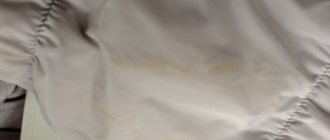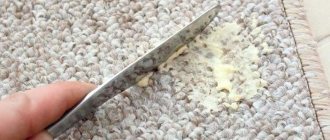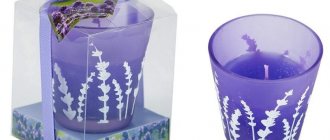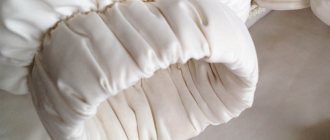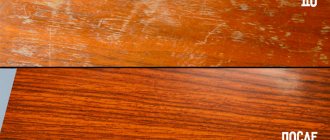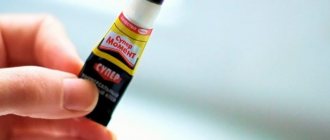Many girls now strive to do waxing themselves, as it saves not only their time, but also money. However, they often face the problem of increased stickiness of the base, which is why questions arise about how to remove wax after depilation. Despite the fact that it is safe and hypoallergenic, it must be removed carefully and quickly enough.
Before getting rid of the problem, let's look at the main ways and means of washing off wax after depilation so that you can choose the best option for yourself.
How to remove wax from dishes using household chemicals
Using a variety of household chemicals will also help remove wax from dishes. The most popular options in this case are:
- Washing powder. In order to get rid of stains in this way, it is necessary to expose wax stains to heat by placing the soiled item under running hot water (temperature at least 50 ° C) after the substance becomes soft. Next, use a sponge and regular washing powder to remove any remaining substance from the surface of the product.
- Liquid for removing dirt from the internal surfaces of ovens and microwave ovens. These products are distinguished by a high alkali content in their composition, so they cope with the task quite easily and quickly. To get the result, you need to apply this product directly to the wax impression and leave everything like that for about 10 minutes. After waiting time, you need to wipe the household item and wash it in the usual way.
- "White Spirit". It will help to cope with old and heavy paraffin stains. Apply this product to a clean rag and wipe the stains with it. The procedure should be continued until the contamination is completely removed. After this, the product should be washed thoroughly using your usual detergent.
Time-tested methods
There are many effective methods for eliminating pollution using improvised means:
| means/method | Can | it is forbidden |
| acetone | natural materials, only in extreme cases | synthetics |
| ammonia, gasoline | suede, leather | jeans |
| "White" | only natural light ones | other |
Even if you are sure what the composition of the clothing is, try to test any product on the spot that is not visible.
Removing wax stains from delicate fabrics
To remove wax residues, you can use a standard set of household chemicals. The most common of which are:
- petrol;
- White Spirit;
- kerosene;
- solvents;
- acetone.
It is best to soak silk and wool items in water, after adding dishwashing detergent to it.
However, not all of these products can be used when cleaning delicate fabrics. When cleaning items made from delicate fabrics, it is best to follow some expert advice:
- The best way to remove wax from suede is by steaming it.
- It is best to soak silk and wool items in water, after adding dishwashing detergent to it. For easier cleaning, leave the item in the solution for 10-12 hours.
- For delicate fabrics, the ideal option would be to use heat cleaning, since regular washing is not able to remove wax stains.
In the absence of sufficient experience in removing various types of contaminants from the surface of various fabrics, experts recommend watching a video on how to remove wax from clothes. Such a video can easily be found on specialized websites on the Internet that are dedicated to cleaning clothes from various types of contaminants.
What do you think about it? , your opinion is important to us
Contraindications for performing the procedure at home
Despite the simplicity of the procedure, depilation has some contraindications:
- diabetes;
- skin and infectious diseases;
- warts, moles, neoplasms;
- varicose veins
If depilation is not contraindicated, prepare everything necessary for the procedure. Buy the wax mixture in specialized stores and only from trusted manufacturers. Before use, do not forget to do an allergy test.
After depilation, lubricate the skin with a product that slows down hair growth. This will prevent their ingrowth and help keep the skin smooth for a long time.
Mechanical cleaning
Each type of material requires its own wax removal technology. The procedures are united only by a common goal - to restore the attractiveness of the fabric and remove defects.
For example, wax stains can be wiped off with an organic solvent. For this purpose, cotton wool must be soaked in the substance and the problem area must be treated, then the item must be washed in warm soapy water. But before using an organic-based solvent, it must be tested on an inconspicuous area of the item. If the composition has damaged the color or structure of the product, it is better to purchase a special stain remover.
To remove wax from silk or wool fabrics, use a good kitchen utensil cleaner. A little liquid should be applied to the problem area and foamed. After this, you need to wait about 10 minutes, wash off the residue and wash the item in the traditional way.
If the item is made of calico, linen or cotton, then wax marks can be removed from it using an iron. You can try removing a small wax stain with a tablespoon heated in hot water. This will melt the paraffin and allow it to come off the fabric. To do this, the device is applied to the problem area.
If there is no positive effect from heating, you should use freezing. To do this, the spoiled product must be placed in the freezer for 30-40 minutes. When the wax hardens, it can be easily cut off with a sharp blade or knife. You can get rid of marks using an iron.
Fur clothing can also be cleaned by freezing. Suede items can be tidied up using a solution consisting of the following ingredients:
- 35 ml of ammonia;
- 10 ml of good wine alcohol;
- 50 ml filtered gasoline.
Most often, stains from wax, paraffin or stearin on clothing appear as a result of careless handling of candles. Therefore, dirt looks like drops and smudges. Before using chemical stain removers, you should try to remove the stain mechanically. This will remove most of the wax.
Scraping
It is not recommended to use a knife, as a sharp blade will easily damage the fibers of the fabric, and a hole or abrasion will form in place of the stain.
Steam treatment
Since wax melts well, it makes sense to get rid of the stain using high heat. One option is steam treatment. To do this, you need to boil water in a small saucepan or in a regular (not electric) kettle.
You should hold the stained area over steam until the candle marks begin to melt. Now you need to carefully blot the liquid wax with a napkin. This method is suitable for clothes made of natural fabric, but cannot be used for synthetics.
A more comfortable method is to process things with an iron or hairdryer.
Procedure:
- Remove as much wax as possible by scraping.
- Place several paper napkins under the cloth and on top of the stain area.
- Use a hot iron to melt the wax and absorb it into the napkins.
- Change wipes periodically until the stain disappears.
- Wash the item.
Freezing
Wax smudges can not be heated, but frozen. This method is even easier than using an iron.
Soiled clothing should be wrapped in a bag and placed in the freezer for at least 3 hours. In winter, take it out onto an uninsulated balcony. When wax freezes, it becomes brittle and easily cracks and crumbles. It won't be difficult to scrape it off.
Using mechanical methods and exposure to temperature, the wax is removed from the surface of the fabric. But there will still be a greasy stain from substances that have penetrated deep into the fibers. Therefore, you can’t do without stain removers.
Candle marks on jeans
Cleaning practical and thick jeans from wax drops will not be difficult.
- Place the jeans in a bag and put them in the freezer for 2 hours. Scrape off the frozen paraffin from the fabric and wash with powder.
- Washing with soaking is also effective. The trousers are soaked in hot water at 50-60°C with powder and kept for half an hour. Then they wash the stain with laundry soap and put the item in the washing machine.
- Keep the trousers over steam for 30 minutes and wash with powder in hot water.
- Drops from denim are quickly removed after soaking in alcohol and sprinkling with table salt. The effect is achieved after 4-5 times.
Paraffin stains are durable. The wax on the fabric should be treated with a stain remover or dish gel so as not to be washed again. Old blots may not be removed in one go, then the treatment is repeated.
It is not recommended to use ammonia for denim because it ruins the color.
Quality requirements
We need to understand the terms. For any wax product, four numbers are determined: acid number, iodine number, ether number and saponification number. What this means is clear from the technology:
- Caustic potassium reacts with fatty acids and esters. Typically, 1 g of wax takes 89-97 mg. This is the saponification number.
- The last number is equal to the sum of the essential number and the acid number.
- The mass of iodine that 1 g of wax will add is the iodine number.
Other properties are also important: physical, etc.
The hardness coefficient can be determined at home - you need a needle with a diameter of 1.5 mm.
"Vika" OGTS-1
However, GOST requires the use of the OGTS-1 installation. Measure the distance to which the needle is immersed in the wax under a force of 1 kgf. The product must be cooled to +20 °C.
The numbers from GOST 21179-2000 are summarized in a table.
| Stationary apiary | Nomadic | |
| Spring steppe forbs | 10-15 kg | – |
| White acacia | 30-35 kg | Up to 80 kg |
| Linden (low-growing) | Same | Same |
| Sainfoin, buckwheat or sunflower | 45-60 kg | 120-130 kg |
The saponification number is not equal to the percentage of esters and acids. It exceeds 100! But there will always be a relationship between both.
Types and uses of animal wax
A useful cosmetic product is lanolin. This is a wax that is formed when sheep's wool is boiled. The yellow or brown viscous mass is used to make softening, moisture-retaining, skin-protecting hand and face creams.
Whale oil spermaceti, located in the sperm sac in the head of the sperm whale, is used for the same purposes.
This soft yellowish mass contains about 20% wax. Now I don’t catch sperm whales, so they rarely make anything from whale wax.
How to remove wax from clothes “one-two-three”?
An accidentally planted stain may not be detected immediately, but the right actions will help get rid of it.
Step 1. Remove wax mechanically (scrape off)
To make the process easier, the wax must be frozen. To do this, wrap the soiled item in plastic and put it in the refrigerator for a quarter of an hour. An alternative is to press a metal spatula or spoon onto the stain, which has previously spent several minutes in the freezer. If the fabric is dense, then after the procedure it will be enough to bend it several times so that the excess wax begins to fall off.
Step 2. Get rid of the greasy paraffin residue
If linen or cotton clothing is damaged, an iron will help save it.
Take white toilet paper (disposable sanitary tissues) and undyed cotton napkins (folded gauze will also work). Place the paper on the ironing board, then the stained item, and on top (on the area of the stain) the prepared light rag. Heat the iron and begin ironing the dirty part of the clothing. The wax will melt out, transferring from the fabric to the paper. Periodically, napkins should be replaced with clean ones.
Step 3. Remove any remaining wax stain
“Degreasers” - alcohol, solvent, turpentine, cologne - can cope with the task.
The choice of a specific product also depends on the type of matter. Synthetic fibers should not be treated with solvent as this will cause deformation. It is also undesirable to use “harsh chemicals” on brightly colored fabrics (the solvent can “eat” the color). If you need to save a delicate item, it is better to use regular or ammonia.
What to do with fluffy fabrics that don’t like ironing or washing? Velvet, velor, suede require careful care. It is advisable to remove traces of wax from them with steam - for example, by holding the item over a boiling kettle. The pre-stained area should be treated with a mixture of ammonia and water (a quarter teaspoon per glass). After steaming is complete, the clothes should be dried and then the lint should be combed out with a brush.
You will find even more tips on the topic “How to remove grease stains” in the article – https://www.chistiulia.ru/stirka/borba-s-zhirnyimi-pyatnami-na-odezhde.html. Bread, salt, starch, chalk, mustard, shaving foam, glycerin, flour and many other folk remedies work well with fatty “marks.”
Healing beeswax
Everyone knows, very popular and accessible to everyone - beeswax. It consists of a fatty substance produced by the wax glands of bees during the honeycomb building process. Insects collect nectar and pollen in honeycombs, lay eggs there, from which young bees grow and develop.
All beekeeping products are valuable medicinal products. Wax is one of them. In ancient times, it was used for chewing instead of modern toothpaste. People have noticed that it heals the oral cavity from diseases, has strong antibacterial properties, and is also tasty and aromatic.
Beeswax is included in many ointments and cosmetics, promotes wound healing, has an excellent effect on the skin, vitaminizing, moisturizing it, and has a general healing effect.
It contains more than three hundred substances, vitamins, of which in first place is the most beneficial for the skin and body - vitamin A (4 g per 100 g of product).
- Some people like to chew beeswax. This is truly an excellent substitute for chewing gum and a real tasty medicine, especially zabrus wax.
- Zabrus – caps of completely filled honeycombs cut off for pumping out honey. The top part of the wax and honey gets into it.
- Beekeepers often sell delicious combs with honey in pieces. They are useful for everyone except very young children, as well as people and children with individual intolerance to honey.
- Of course, you need to chew very carefully, biting off in small pieces. The wax can be swallowed. It improves intestinal motility and is a good natural sorbent.
Cleaning wax from cotton, linen, calico
You can consider yourself incredibly lucky if clothes made of dense natural fabric are stained with wax: cotton, wool, calico, linen. In this case, ironing with a hot iron will help solve the problem, as a result of which the paraffin stain will dissolve without a trace.
The cleaning algorithm consists of 5 points.
- The frozen candle wax must be removed from the surface of the material. To do this, you can use any blunt wooden or metal object: scissors, knife, ruler, nail file. When carrying out work, you should be careful not to damage the fibers of the fabric.
- It is necessary to prepare the necessary equipment. To remove the stain you will need an iron, ironing board, two cotton napkins, and clean sheets of paper.
- The iron is heated to the temperature that the material of the damaged product can withstand. The steam function must be switched off.
- Place a cotton napkin on a table or ironing board, place dirty clothes on it so that the stain is at the top, and cover with a sheet of paper. The resulting “sandwich” is ironed. As soon as the paper is saturated with dissolved wax, the sheet must be replaced. The process is continued until the grease stains disappear from the paper.
- A greasy mark imprinted on the material can be removed with a stain remover or by washing the item in very hot water.
If colored paraffin gets on your clothes, you need to use a stain remover or alcohol to clean it.
A cloth is moistened with 100% alcohol and the area of contamination is carefully treated. The dye transferred to the napkin indicates that the product is working and will soon be able to completely get rid of the stain
To remove wax from thin cotton or linen, you can use a hair dryer or steam generator instead of an iron.
What to do if the wax is colored
Colored wax is unpleasant because, in addition to grease and candle stains, it colors the product in the shade of its dye. Therefore, you should not heat the damaged area with an iron or hairdryer, as the foreign pigment will be even more strongly absorbed into the fabric structure. Use liquid cleaners such as alcohol, ammonia, or stain remover. Apply a little product to a napkin and gently blot the area. Gradually, the dye will be absorbed by the multilayer paper and not a trace will remain of the stain.
In such cases, ammonia helps well and does not damage the fabric.
Removing wax stains from other surfaces
Removing wax marks from carpet
You can clean a carpet in the same way as removing paraffin from clothes made from natural fabrics. There are several methods:
- Cleaning with an iron. Allow the wax to harden and become brittle. If there is too much of it, you can apply a plastic bag with ice to the contamination. Try to carefully remove as much dried wax or paraffin as possible. Then apply a clean napkin to the surface and iron it.
- Removing any remaining colored wax stain. In this case, acidic or alkaline solutions are used to remove dyes. Ordinary soda is suitable as an alkali, and vinegar can be used for an acidic solution. Make a slurry from baking soda by pouring a little warm water into it. Then strain this solution so that there are no solid particles and apply it to the colored paraffin stain. You can lightly rub it into the fibers. Leave the solution to act for an hour and then rinse.
- Hydrogen peroxide. Apply undiluted peroxide to the wax droplets and let it dry.
Removing candle wax from wood
It is advisable to remove wax from wooden products while it is still warm and not hardened.
If you were unable to get to the stain right away, you will have to remove the hard wax very carefully so as not to scratch the delicate surface. If you were unable to scrape off the wax without leaving traces, you will have to sand the damaged surface and re-varnish or paint it
You can also try cooling the wax or paraffin and then using a piece of thin cardboard or plastic to carefully peel it away from the surface. You can also use the “reverse” method: heat drops of wax with a hairdryer
You must first cover the entire area around the stain with a cotton cloth or paper to prevent the wax from spreading. Turn on the hair dryer and heat the stain, dipping the hot wax with a rag, until all marks are gone. As a last resort, you can use the method with an iron and fabric absorbents. You need to be especially careful when doing this so as not to damage other areas of the wood surface.
You can also use the “reverse” method: heat drops of wax with a hairdryer. You must first cover the entire area around the stain with a cotton cloth or paper to prevent the wax from spreading. Turn on the hair dryer and heat the stain, dipping the hot wax with a rag, until all marks are gone. As a last resort, you can use the method with an iron and fabric absorbents. You need to be especially careful when doing this so as not to damage other areas of the wood surface.
Removing candle wax from walls
In this case, the method with a hairdryer and paper towels is suitable. Proceed as described above to completely remove wax or paraffin from the wall. It will be difficult to do this alone because the wax drips from a vertical surface, so have someone help you wipe it off. Colored wax residues from the wall can be wiped off with an eraser or a paste of baking soda and water (1:3).
Wax on glass
Glass is the most hassle-free material and is very easy to clean from wax stains. The wax can be frozen with ice and then carefully removed in one piece. Its remnants can be easily removed with glass washing liquid.
Removing wax from granite surfaces
The best way to remove wax from such material is with a spatula heated in hot water. The operation can be carried out in several stages, each time dipping the spatula into boiling water. Then wipe the surface with a clean cloth to permanently remove any remaining wax or paraffin.
If you were unable to remove wax stains using one of the methods described above, you will have to use one of the specialized candle wax removers. Follow the manufacturer's instructions carefully to effectively remove the stain.
Removing greasy stains from furniture upholstery and carpets
Often, wax can stain both furniture upholstery and carpet.
Cleaning furniture upholstery
The upholstery of armchairs and sofas is tapestries, acetate, plush, velor, velvet. Stains from soft fleecy fabrics can be removed with heated alcohol or turpentine, they dissolve the wax. Dip a cotton pad in alcohol and apply it to the wax stain for half an hour. Then we treat the stain with soapy water and remove any remaining moisture with a dry cloth.
The fabric upholstery of the sofa can be cleaned of traces of wax with alcohol or turpentine.
If the furniture upholstery is very dirty, this method will help:
- Remove furniture covers.
- Place a dry, clean towel on the inside - preferably a waffle one, folded in several layers, with blotting paper on the outside.
- Iron the stain through the blotter until the towel has completely absorbed the melted paraffin or wax.
Blotting paper is used to absorb grease left on furniture after brushing off wax.
Keep in mind that velor or velvet do not like ironing, so it is better to use alcohol or turpentine, or you can use a paste of soda, which is then washed off with a damp sponge.
Remove paraffin or wax from the pile
Pile fabrics, carpets and rugs are also susceptible to wax contamination - we save them with a hairdryer and a stiff brush (the method is described above), an iron and blotting paper.
Wax from carpet is easy to remove
There is a unique way to clean products with long pile:
- Place a piece of cloth on the wax stain that can absorb moisture and grease well, no smaller than the size of the stain.
- Take a sheet of thick paper, which should be larger than the base of the iron so that the iron does not come into contact with the carpet pile. Place the sheet on the fabric.
- We set the required iron mode - synthetic. Place the iron on top of the paper for a few seconds and iron the stain with it.
Do not extend the iron beyond the edges of the paper, avoiding contact with the lint
- We remove the iron, paper and fabric.
The “cold” method, applied to wax on a fleecy surface of ice, also works. We do not exclude cleaning with hot water, solvent or soap solution.
Ice will easily remove wax residue from the carpet.
Video: how to remove wax drops and wax stains at home
Features of cleaning different carpets
The first step is to determine what type of carpet you have and what material it is made of. If the rug is synthetic, it is better to use specialized chemicals or contact specialist cleaning companies.
We carry out carpet cleaning work wearing rubber gloves and, preferably, wearing a respirator (but not gauze - it is ineffective)
On the contrary, if the carpet is made of natural fibers (entirely or mostly), it is better to use traditional methods.
Contaminants from classic white candles are removed relatively easily, but problems can arise with colored candles. Both colored and oil-containing candles can leave stains that are difficult to remove, in which case you need to proceed as follows:
- First, remove as much wax as possible using a dull knife.
- Using a piece of ice, or ideally a cold accumulator for a thermal bag, you need to freeze the remaining wax. To do this, wipe the contaminated area of the carpet with ice or simply leave it on the stain for 45-60 minutes. After this, all that remains is to remove the frozen wax.
- Now you need paper towels with good absorbency. Place a towel over the stain and iron it. The remaining wax will melt and be absorbed by the towel.
- Perform the paper towel procedure several times, changing the towels each time.
- If it is not possible to completely remove the contamination, use vodka or alcohol-containing products (preferably pure alcohol). Alternatively, you can use stain removers or any type of detergent.
Using vegetable wax
Replace it with jojoba oil. This oil consists half of liquid wax and other plant substances that are beneficial for the skin. Jojoba oil (which contains 50% wax) is included in various types of high-quality cosmetics.
The hardest wax is obtained from palm leaves. Its yellow-brown flakes begin to melt only at temperatures above 90 degrees.
This wax is used to make candles:
- Polishing mixtures for wood;
- Shoe polishes,
- Preventing water penetration;
- Garden varnish, necessary for processing fresh tree cuts during late or summer garden cleaning;
- In cosmetics.
- Well-hardening wax is needed for hair removal.
The importance of hemostatic bone marrow, which is used in medicine as a putty for fractures to stop bone bleeding, is of great importance. The wound heals much faster, and this wax is dissolved by the body over time.
In dentistry, bite impressions are made using hard wax plates; they are necessary when installing fillings. Decorative plasters with wax look beautiful. Car wax improves color and forms a protective layer on the car body. Well-hardening wax is used for casting sculpture blanks and sculpting them.
Wax removal methods depending on the type of material
How to remove candle wax from clothes? Before removing paraffin contaminants, you need to understand what the properties of the material are and which method is suitable (cold or hot method). Ideally, a label indicating the composition of the fabric and cleaning rules for a specific product has been preserved. You need to find time to slowly process damaged items: if you rush in such a delicate matter, the fabric will most likely be damaged.
"Cold" method:
- dense fabrics can be placed in the freezer or taken out to the balcony in frosty weather;
- if the size of the item does not allow you to put it in the freezer, then you need to attach a bag of ice to the wax drops;
- After strong cooling, the wax hardens and can be easily removed with a flat object. Do not use a knife, especially on the sharp side: it is easy to damage and tear the fabric;
- After removing the dense top layer, further processing must be carried out taking into account the type of material.
"Hot" method:
Before processing the item, you need to carefully remove as much wax as possible. A nail file, ruler, and blunt scissors are suitable; now you need to take out and lay out on the table all the items for “home dry cleaning”: a small piece of cotton fabric, an iron, clean paper, napkins; heat the iron to 80 degrees, be sure to turn off the “Steam” mode; From the top and back side of the item, place thick kitchen napkins or photocopier paper on the contaminated area, then a cotton cloth, iron the problem area
The wax sticks to the paper and the stain is reduced. Repeat the operation until the paraffin layer disappears; only a greasy stain should remain on the fabric; The final stage is the use of a ready-made stain remover for a specific type of fabric.
Why does wax stay on the skin?
The essence of waxing is that the wax sticks to the hairs and pulls them out by the roots. To do this it must be sticky. Even if the procedure is carried out correctly, marks remain on the skin. And if you make a mistake, there will be drops or drips. It is impossible to remove them with your hands or with water.
The skin remains sticky after any type of wax - cold or warm, in cartridges or strips. This cannot be completely avoided due to the nature of the depilatory composition. To pull out hairs, it must stick well.
But if there are a lot of wax residues, it means that the procedure technology has been violated. This often happens if the skin is not sufficiently prepared for hair removal or is prone to dryness.
When using liquid wax, streaks, streaks, or drops may remain that have not been removed. If applied carelessly, they appear even in areas where hairs are not removed. The reason may be a poor-quality depilatory mixture, with lumps or heterogeneity, too liquid or thick. Such consequences are more often encountered by inexperienced women performing the procedure for the first time.
How to avoid unpleasant consequences
If the depilation procedure is carried out correctly, only a slight stickiness remains on the skin. If you know how to remove it, you can do it quickly.
Wax streaks clog pores and can lead to pimples or acne. Their prolonged presence on the skin causes irritation and allergic reactions. When the wax dries, it tightens the epidermis, which can cause bruising.
You can avoid such consequences. To do this, you must follow the basic rules of waxing:
- apply liquid wax evenly, in a thin layer using a spatula;
- treat a small area of the body at a time;
- follow the temperature recommendations - it should be 40-50°C;
- when using wax strips, warm them between your palms;
- press the strip to the body, smooth it so that the wax adheres well to the hairs;
- do not wait long for the composition to harden, 10-20 seconds is enough;
- remove the strip with a sharp, quick movement;
- Before applying the product, steam the skin, dry it well so that no moisture remains, and sprinkle with talcum powder or baby powder;
- the length of the hairs should be 5 mm, so they will better adhere to the wax;
- try not to stick strips or apply wax to the same place several times;
- buy depilatory products from trusted brands in large stores.
Methods for cleaning wax from clothes depending on the type of fabric
Before removing candle wax from fabric, you should determine its composition. For different types of material, there are the most optimal home cleaning methods that will allow you to restore the original appearance of the soiled item.
A selection of tips on how to remove wax from fabric, depending on its type and structure:
Natural fabric
If the stained item is made of natural materials such as cotton, linen or wool, to remove the stain you will need an iron, a small piece of cotton fabric and a regular paper napkin. Sequencing:
- the damaged item is laid out on the ironing board;
- cover the candle stain with a napkin;
- a cotton fabric is spread over the napkin;
- Use a heated iron to smooth out the stain;
- If the wax is not completely removed from the surface of the fabric, the heat treatment should be repeated.
The principle of this method is to melt the frozen drop, which will allow the liquid wax to be absorbed onto the surface of the paper napkin. This method should not be used when removing stains from colored candles - chemical dyes, when heated, can change the color of the damaged area of the item.
Denim
This method is also suitable for denim. However, before removing the wax with an iron, in this case, you should place a paper napkin under the stain - the remaining paraffin will be absorbed into it, passing through the structure of the denim fabric.
In principle, regular washing in a washing machine should deal with stains on denim, but it is advisable that before washing candle wax from clothes, you should first clean the stain using one of the following methods:
- freezing - the soiled item is placed in the freezer for a while; after freezing, the wax will become brittle and crumble when the fabric bends in the contaminated area;
- by scraping the stain - before wiping a drop of wax from denim, you should adequately assess the strength of its condition, otherwise a hole may soon form at the site of the stain;
- using denatured alcohol - this method is suitable for thick denim. The contaminated surface is treated with 2-3 drops of denatured alcohol. Within a few seconds, the wax will dissolve in the alcohol, after which it should be blotted with a paper towel.
After preliminary cleaning of the stain, the denim item should be washed in a machine in the appropriate mode for this type of fabric.
You can try to clean a fresh stain that has just appeared on the surface of dark denim using dishwashing detergent or alcohol-containing perfume, and then rinse off the applied product.
Synthetic
Removing wax or paraffin drops from candles placed on clothes made of synthetic fabrics will require a more careful and attentive approach to solving the problem. Before starting cleaning, you should carefully study the product label in order to avoid irreparable damage to the item. Possible methods:
- using an iron, the described method is only possible in delicate ironing mode, using a damp cloth;
- Soaking the item should be carried out at the washing temperature recommended by the manufacturer for several minutes. The procedure must be repeated until the stain is completely cleansed;
- using purified gasoline or turpentine, a few drops of one of these products applied to the wax will change its structure, then the contamination can be wiped off.
Regardless of the chosen cleaning method, after completion, the product must be washed completely.
We recommend: How to remove glue from a sticker
Delicate
Despite special care for things made of satin, velvet, silk and guipure, they quite often find themselves victims of the “drip attack” of candles. This can easily be explained by the solemnity of events where candles are present and, as a result, the use of the most expensive and beautiful wardrobe items.
Delicate fabrics damaged by wax can be washed by soaking them in liquid detergents, such as liquid soap, and then machine washing them at 30℃.
Turpentine can also remove a frozen drop of wax.
Before washing off the wax, you should soak things in water for 15-20 minutes. Next, the stain should be wiped off with a soap solution.
You cannot use purified gasoline to remove paraffin stains from delicate fabrics - this will cause a color change in the area of clothing being cleaned.
Cleaning up leftovers
To remove greasy stains left after wax, the following products are suitable:
- ammonia;
- kerosene;
- unleaded gasoline;
- acetone;
- turpentine;
- solvent;
- synthetic detergents;
- dishwashing liquid.
After processing, the material must dry well and only then can it be washed.
However, it should be taken into account that if the wax is not removed immediately, it will be almost impossible to remove it after a few days. Attention! If it is difficult to determine which cleaning method is suitable for your item, then it is better not to take risks, but to use dry cleaning services (especially if wax stains are noticed on expensive clothes). Firstly, it is much easier for professionals to cope with such a task. Secondly, in case of failure, they will compensate for the damage for the damaged item.
How to quickly remove wax marks
Once on the fabric, the wax penetrates deeply into the structure of the material. Even if the candle was colorless, the trace may remain noticeable, greasy stains. Moreover, stains from colored candles bring the housewife a lot of grief. If you do not remove them quickly, it will be difficult to get rid of them later, since over time they become very resistant to any cleaning methods.
The technology for cleaning wax or paraffin drops that have fallen on the material depends on the type of fabric from which the suit or dress is made. As soon as the drops of wax harden, and this usually happens very quickly, it is recommended to use a non-sharp knife, preferably a plastic one, to remove the stuck wax from the surface of the clothing. Do not press too hard with the knife to avoid damaging your clothes. At the same time, you need to prepare paper or fabric napkins, heat the iron at a low temperature so that it heats up to a sufficient, not hot temperature.
A soft cloth is placed under the stained area, one napkin is placed on the stain, then ironed, and the lower and upper napkins must be changed frequently. If traces of colored candles appear, it is recommended to pre-treat the cotton fabric with denatured alcohol and also iron it, changing napkins.
Then wash the stain with decades-tested laundry soap. Then the clothes are washed using the usual method to remove any remaining chemical stain removers if the stains were colored.
How can I remove the stickiness after wax strips from my face?
The skin on the face is sensitive and tends to enlarge pores and cause irritation if not properly cared for. Even waxing itself is a traumatic procedure, causing damage to the top layer of skin.
The use of oils can lead to clogged pores. If they are used, their consistency should not be too thick. Warming up is also not advisable, it can lead to inflammation.
The best option is to use special tools. In this case, the face will be cleansed, and severe irritation will not occur.
How to remove wax from different fabrics
Natural
If you plan to remove wax from linen, wool or cotton clothing, you should be aware that the process will require some effort. After all, paraffin or wax, getting between the fibers of a T-shirt, dress or coat, gets stuck there very firmly. In order to quickly and properly remove wax from natural fabrics at home, you will need an iron and a napkin.
Lay the clothes out on a flat surface, dirt side up. Cover the stain with a paper or waste cloth and iron it for half a minute. Then remove the napkin and make sure the stain disappears. If traces still remain, the procedure should be repeated a couple more times, but with a clean napkin.
If necessary, you can place another napkin directly under the wax mark. If there is a greasy trace left from the paraffin, it can be washed off in the usual way.
If using a hot iron is strictly prohibited, a solvent will help. It is applied to a cotton pad and the stain is treated, but you must first test the effect of the composition on the fabric in a small, inconspicuous area.
As another alternative to ironing for thin fabrics, you can use a hair dryer, which is directed to the contaminated area covered with a napkin.
Synthetics
How to remove wax from things made from synthetic fabrics that cannot be exposed to a hot iron? Prepare a bowl of hot water and a brush or piece of cloth. Soak the stained clothing in the water for a few minutes, and then gently remove the paraffin or wax with a cloth or soft brush. Do not rub too hard to avoid damaging the material.
You can also use turpentine. Simply wipe the stain with a cotton pad soaked in this liquid. After treatment, you will need to wash your clothes.
Fur
Contamination is distributed throughout the fibers, and this greatly complicates the process, so it will not be possible to remove paraffin from fur clothing as easily as from synthetics. Fur items cannot be heated with an iron. Low temperature will help. In winter, in severe frosts, you can simply hang your clothes on the balcony and wait for the stain to harden.
If the size of the freezer in the refrigerator allows, then the product can be placed there, or the area of contamination can be rubbed with a piece of ice. When the paraffin or wax hardens, it must be carefully removed from each lint.
Suede and leather
Before removing wax stains from leather and suede clothing, heat the water until it steams. Gently scrape off the paraffin or wax with the blunt side of a knife. Then hold the dirt over hot steam and gently wipe off the residue with a soft brush. Also, a stain, for example, on a jacket, can be covered with a clean napkin and heated a little with a not very hot iron.
If these manipulations do not work, then try using ammonia. It needs to be diluted in water (half a teaspoon per liter of water), moisten a cotton pad in the resulting solution and wipe the stained area.
If wax marks appear on suede shoes, then first you need to hold them over steam for a while, and then clean the stains with a stiff brush. If necessary, repeat the procedure.
Jeans
Removing wax from denim clothing is very easy and only takes a few minutes. After dripping a candle onto your favorite pants, do not try to remove the stain immediately; you need to let it harden. To do this, put the item in the refrigerator for 10 minutes.
After the stain has hardened, simply rub the fabric with your hands, as if washing. The wax mark will “fall off” by itself. Any remaining grease stain on your jeans can be washed off with soapy water.
Delicate fabrics
Removing wax from clothes made of delicate fabrics such as silk, chiffon, and organza has its own characteristics. A hot iron is contraindicated here, and alcohol-containing solutions can ruin the material.
Dishwashing liquid will save the situation. Just wet the wax stain well with this gel and leave it until it dries. Then wash the item in warm water. As a last resort, you can take your clothes to the dry cleaner, where they will get rid of such fives efficiently and quickly.
On a note
- You can begin removing paraffin only after it has completely hardened. The substance is quickly absorbed and rubbing a fresh stain will cause it to increase. It is best to blot the still hot wax with a napkin.
- For the production of candles, a material with a dense and greasy texture is used. It does not dissolve with water, so regular washing will not remove the wax.
- The longer paraffin remains on the fabric, the deeper it penetrates the fibers and the larger the oil stain will be. Therefore, you need to act quickly.
- The effect of the solvent and stain remover must first be checked on the wrong side or on the waistband so as not to disturb the color or get streaks.
- Often, after removing the wax, a trace of oil is visible on the clothes. You can remove it with known anti-greasy stain products. If the item is dry, then sprinkle the print with talcum powder and leave for half an hour. The powder is shaken off and the contaminated area is washed. Dish gel, vodka or alcohol will successfully remove the stain. All that remains is to wash the item in the usual way.
- White clothes made from natural fibers can be soaked in “Whiteness” to remove candle marks. The area with the imprint on the colored fabric is soaked in vinegar for half an hour. In case of severe contamination, a small amount of citric acid is added to it.
- It is better to remove wax residues from fabric with a toothbrush, because its bristles are the smoothest and do not disturb the structure of the material.
How to remove wax residues after depilation
Here you should consider what wax was used for depilation. If cold (soluble) wax was used for this, it is easily washed off with plain water. When using warm or hot wax, water will not help. In this case, more serious measures will be required to remove wax residues after depilation. Let's look at the most popular and effective ones.
Special napkins
special wipes that help remove depilatory wax from the skin
The composition of the impregnation is selected in such a way that they not only cleanse, but also nourish it and prevent the development of inflammatory processes. Since there are few such napkins in the set, it is better to buy them separately - they will not be superfluous, because each case is individual and if you fail, you may not have enough of what is in the set.
Attention! Regular wet wipes are not suitable for wax removal! They will not cope with the task, and aromatic additives may even be harmful. As an example, we list several types of special napkins:
As an example, we list several types of special napkins:
- Beaty Image napkins are made of delicate non-woven material and soaked in floral oil, rich in vitamins. Packaging - individual plastic, tubes or jars.
- Vliesstreifen-Rolle fleece cloths are good for removing wax during depilation. Release form: rolls or packages of 50-100 pieces per pack.
- FW Wax Kiss wipes are soaked in oil and paraffin, gently cleanse and restore the skin, and can be used on any part of the body. Hypoallergenic, suitable for home and professional use.
- Antiseptic alcohol wipes Arabia, individually packaged. They are great for removing wax after depilation and do not dry out the skin. 70% alcohol, on the basis of which the impregnation is made, has a strong antimicrobial effect.
This is only a small part of a wide range of similar products; when purchasing, carefully read the characteristics and purpose, and check the expiration date.
Fat creams
This method attracts with its simplicity and accessibility. You need to generously apply the rich cream to the body area and after 1-2 minutes remove it from the skin using a regular napkin, cotton pad or towel.
If necessary, repeat again, although, in most cases, everything is successfully cleared in one go. The final touch is to wash the skin with water using a fairly hard washcloth, which will completely remove all dirt.
Remember! You should not use a cream with many additives, especially if any component can cause allergies.
Vegetable oil
Any vegetable oil - sunflower, olive or flaxseed - works well for cleansing, since it can dissolve wax. Just moisten a napkin with oil and wipe the dirty areas. After this, wash well with soap and water to get rid of oily shine. Pat your skin dry with a towel. This is a soft, gentle cleaning method, suitable for any skin.
Lint-free cotton towel
How to get rid of wax after depilation if none of the above is at hand? - You can use a simple towel. Terry wool will not work, better waffle without lint, or from coarse flax. Take an old but cleanly washed towel, warm it well with an iron and wipe the areas of your body with a hot towel after depilation.
Any remaining wax will collect on the fabric. Sometimes the fabric is heated directly on the body, but this is unsafe because it is easy to get burned. For people with thin, dry skin prone to flaking, this type of cleansing is absolutely not suitable. There is a high risk of skin injury, inflammation and irritation.
Washing wax crayons
Unplanned traces of wax pencils on wallpaper will make few people happy.
You will have to work hard to get rid of the unplanned “masterpiece” on the wallpaper
- If the wallpaper is washable, you can use rubber glue: apply a thin layer of glue to the pencil drawings, and when it dries, remove the adhesive film along with the remains of wax crayons on the wallpaper.
- On washable wallpaper, you can wipe the patterns with a cloth soaked in mayonnaise, soda slurry, Mr Proper floor cleaner or shaving foam. Leave the product on the contaminated area for a few minutes and then wipe with a damp cloth.
- If the wallpaper is paper, moisten the drawings with wax pencils with gasoline (it is important to ventilate the room well afterwards) or with paint remover from leather. You can also use baby wipes.
And the other day our young Picasso drew on the white walls with an orange and red pencil. I washed it with leather paint remover. (I dye my eyebrows at home, so that there is no dye on the skin, I use it).
Anya
https://www.babyblog.ru/community/post/domovodstvo/1690855
Wet baby wipes. Long, but reliable. They wash everything. Our haggis are blue. I haven't tried others.
Lyulya
https://www.babyblog.ru/community/post/domovodstvo/1690855
To remove crayon marks from your writing board, use baby wipes. You can also use sunflower oil or melamine sponge.

